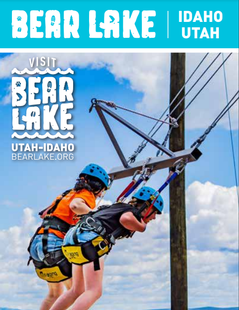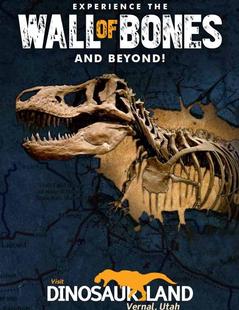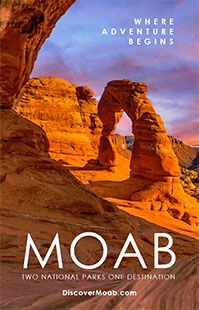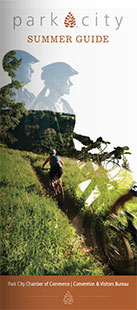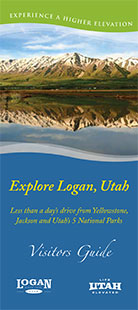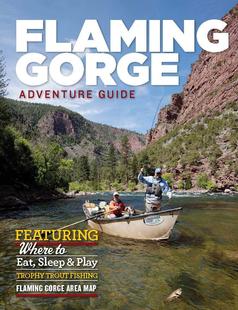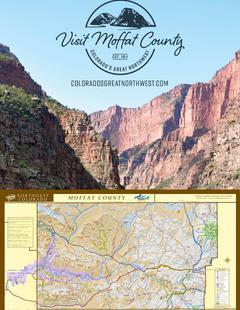Basics
- Length:
- 227.87 miles (366 km)
- Time:
- Allow around 4 days to enjoy the Byway or 1.5 days to drive the Byway.
Description
The National Road is the Road that built the nation. Commissioned by Congress in 1806, 2006 marks the bicentennial of its initiation. Ultimately, the Road ran from Cumberland, Maryland, to Vandalia, Illinois, and was constructed through Ohio during the 1820s and 1830s. Today the route is defined by Highway 40. Visitors to the National Road can see the evolution of the U.S. from stagecoach to railroad, automobile, and even airplane.
The construction of the National Road through Ohio opened the state and much of the Northwest Territory to settlement. The Road also provided access for Ohio products to eastern markets. As a result, there was a continual flow of people both east and west along the route. This hubbub spurred town and village development, complete with taverns, inns, and blacksmith shops to serve travelers' needs.
Relive the journey today as you cross original bridges and visit remaining historic buildings. See stone S-bridges, a unique feature of the National Road, at Blaine Hill, Salt Fork, and Fox Creek. The Blaine Hill Bridge served National Road travelers for well over 100 years. It is Ohio's oldest bridge and was recently named the state Bicentennial Bridge. Stop in at the Pennsylvania House Museum, a restored tavern. Travelers ate and relaxed here after a long day on the Road in a rickety stagecoach or alongside livestock headed to market.
The impetus of the railroad drew people from the National Road until the turn of the twentieth century when the advent of the automobile sparked a new interest in the route and fostered a new round of building construction. Service stations and motels, diners and drive-in movie theatres gradually sprang up. Today they and the remaining historic taverns and inns provide a concrete manifestation of the route's evolution, as well as a living history of America's growth and change over time.
Find a timeline of the National Road at the National Road/Zane Grey Museum in Norwich. The museum also highlights the region's art pottery tradition and the life and works of famous Zanesville author Zane Grey. Alternately, stop by the Heritage Center of Clark County, which features a National Road Gallery that highlights the history of the Road and its impact on Clark County through a multitude of artifacts and interpretive panels.
The automobile wasn't the end of transportation evolution related to the National Road. Modern travel in airplanes began in Dayton, where the Wright Brothers changed the world forever. See the Huffman Prairie Flying Field and the 1905 Wright Flyer III at the Dayton Aviation Historical Park. The National Park hosts various museums and self-guiding tours.
From foot to flight, the National Road is a road of advancement and evolution, growth and expansion. It maps the development of the United States from its early years to today, when its borders extend far beyond Ohio.
Tourism Resources
Helpful Links
Tourism Resources
Points of Interest
Points of Interest Along The Way
Aullwood Audubon Center and Farm (OH)
Aullwood Audubon Center and Farm adjoins Aullwood Garden in Englewood MetroPark and is one of the most outstanding private recreational facilities on the western portion of the Ohio National Road. It is a 350-acre wildlife sanctuary that highlights the native flora and fauna of west central Ohio, making it an excellent way for visitors to the byway to learn about the natural environment through which they are traveling. The center has six miles of hiking trails, a nature center, a new education center and gift shop, and an organic farm.
Directions
Travel south from the Byway on I-75 to Dayton. The Audubon Center is at 1000 Aullwood Rd. in Dayton.
Battelle-Darby Creek Metro Park (OH)
Battelle-Darby Creek Metro Park is situated along the Big and Little Darby Creeks, designated State and National Wild & Scenic Rivers. Its 3,500-plus acres contain land management areas and a variety of ecosystemsincluding prairies, wetlands, and woodlands, as well as Big and Little Darby Creeks. The park has several trails ranging in length from onetenth of a mile to two miles, and offers other activities including hiking, picnicking, nature and history programs, canoeing, sledding, crosscountry skiing, hunting and fishing, and a pet trail. A ranger station and restrooms are available.
Directions
Travel south from the Byway just west of Columbus to Galloway. The park is at 1775 Darby Creek Drive in Galloway.
Blacklick Woods Metro Park (OH)
Blacklick Woods Metro Park is a 632-acre park thatincludes the Walter A. Tucker Nature Preserve, a swamp preserve designated a National Natural Landmark. Other activities available here include a four-mile trail, picnic facilities, nature center, a golf course, and cross-countryskiing. Meeting facilities and restrooms are also available.
Blaine Hill Bridge (OH)
Blaine Hill Bridge is the state's oldest bridge and recently was named the state Bicentennial Bridge. Constructed in 1828, it is a stone arch bridge that crosses Wheeling Creek in Blaine at the foot of an infamously arduous hill that travelers on the National Road had to climb and descend. This bridge is part of the National Road, which carried travelers from the steep foothills of the Appalachian Mountains, across the Ohio River, and then across Wheeling Creek and Blaine Hill Bridge. The bridge remains in its authentic state, and the sandstone structure is unique for its three arches. The Bridge is thought to be the first bridge in the Northwest Territory. The bridge was saved from demolition, and now has received over $1 million in state aid for restoration.
Brick-Paved Road Section (OH)
On the western side of Norwich, there is a one mile-long segment of the National Road that is entirely paved with brick. Brick paving was popular in the early 20th Century and remnant sections of brick paving can be found on many sections of the National Road, however, few segments are as well-preserved as the segment in Norwich. It is open to passenger vehicles so visitors can experience how driving along the National Road in the early part of the 1900s might have felt like.
Cambridge (OH)
The city of Cambridge is the largest urban area in GuernseyCounty and is a National Road pike town. Through Cambridge, theNational Road is Main Street, a bustling commercial corridor linedwith historic buildings that offer many visitor services. Twoblocks north of Main Street is the Wheeling Avenue HistoricDistrict, listed on the National Register of Historic Places.
In addition to its many historic sites and visitor services,Cambridge offers byway travelers the opportunity to visit one ofseveral glass museums. The city was the site many glassmakers inthe early 20th Century, including the well-known Cambridge Glasswhich is highly collectible today.
Camp Chase Military Prison and Cemetery (OH)
Camp Chase Military Prison was used from 1861 to the end of the Civil War chiefly to hold political and military prisoners from Kentucky and western Virginia, and later privates, corporals, and sergeants from the ConfederateArmy. The height of the prison population occurred in 1863 and resulted in a smallpox epidemic that caused hundreds of deaths, thereby establishing Camp Chase Confederate Cemetery. The cemetery is the only remaining element of the former prison camp, which was located on the grounds of present-day Westgate Park.
Dawes Arboretum (OH)
A remnant of the old forest of Eastern Ohio survives in the Deep Woods plot in Dawes Arboretum. The 1,149-acre arboretum was established in 1929 and contains a modern visitor center, three driving tours, eight walking trails, and acres of gardens, natural areas, and experimental agricultural and arboreal parcels.
Directions
Go north from Jacksontown on Ohio 13 to the arboretum.
Dayton Aviation Heritage National Historical Park (OH)
The Dayton Aviation Heritage National Historical Park is one of the area's top attractions, attracting over 34,000 people annually. It is a collection of sites dedicated to the work of the Wright brothers as well as local author Paul Laurence Dunbar. The park consists of several sites scattered throughout the city, including the National Historical Landmarks of the Wright Cycle Company building and Wright brothers' print shop building, the Huffman Prairie Flying Field, and the 1905 Wright Flyer III. It also includes the Paul Laurence Dunbar State Memorial.
Directions
Travel south on I-75 to Dayton.
Dysart Woods Laboratory (OH)
Dysart Woods Laboratory is worth a detour off thebyway. Owned by Ohio University, this 50-acre deciduous woods contains old-growth beech maple forests like those that once blanketed much of Eastern Ohio. It is designated a National Natural Landmark. Visitors can hike through the 400-year old forest remnant on several trails.
Directions
Travel south from Morristown to Dysart Woods.














